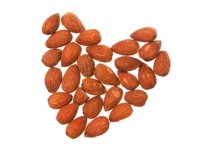
Freedom reigns
By Natalie Cajic
Business Operations Food Safety Food Trends Health & Wellness allergens consumer trends healthy foods print issue - Food in CanadaFoods labelled as free from allergens are gaining ground with a wider audience of consumers
Concerned consumers are now just as likely to scan product labels for known allergens as they are for healthy ingredients. To those with a medically diagnosed food allergy, contact with certain foods such as peanuts or shellfish can mean myriad symptoms, with sometimes-fatal consequences. However, the appeal of avoiding allergens has widened beyond those consumers diagnosed with a food allergy, providing food manufacturers with opportunities to develop new products or extend existing brands.
Perception and reality
New research from U.K.-based independent research organization Leatherhead Food Research indicates that two different sets of consumers are purchasing foods labelled as “free from” allergens such as gluten, dairy and wheat. The first are those they call the “self-diagnosers,” or those who have identified an intolerance to certain foods. Their sensitivity stems from a previous adverse reaction such as a gastrointestinal (GI) complaint. The second group are consumers who perceive “free from” foods as somehow healthier than other food products.
This March Leatherhead’s senior market analyst Laura Kempster spoke with BBC Radio 4’s Food Programme in its investigation of “free from” foods. She noted that the top three reasons why consumers are attracted to “free from” foods are that these products are seen as helping to maintain a healthy balanced diet. In addition, they help consumers cope with existing conditions while improving their digestive health. “They really believe ‘free from’ foods are a part of a healthier lifestyle essentially,” said Kempster.
Dietitian and nutritionist Susan Fyshe of Toronto, Ont.-based Healthy Lifestyle Nutrition Consulting, sees more clients in her practice with food sensitivities today than in the past. While noting that Canada has one of the highest rates of Irritable Bowel Syndrome (IBS) in the world, Fyshe also acknowledges that some people are simply following trends. Gluten-free diets are just one example. “A lot of people are doing it now because it seems like something they should be doing, rather than what they need to be doing,” she says.
In fact, according to Health and Wellness Trends for Canada and the World, a report released in October 2011 by Agriculture and Agri-Food Canada (AAFC), the North American market for food intolerance products has grown into one of the world’s largest, representing 43 per cent of global sales in 2010. In Canada, it’s valued at US$161.3 million. The dairy- and lactose-free market is currently the largest of these markets, with estimated sales of US$3.6 billion in 2010, according to the Leatherhead report Food Allergies and Intolerances: Consumer Perceptions and Market Opportunities for “Free From” Foods. However, it is the gluten-free market that shows the strongest growth potential in upcoming years.
Product opportunities
Kempster believes areas for opportunity include the creation of new categories. For instance, the main categories for gluten-free products have traditionally focused on bakery products such as bread, biscuits and cakes. But, she says, “Things like gluten-free claims are increasingly being found on baby food products, within the sauces and seasoning category, as well as snacks, which represents quite an area to watch.” New areas of opportunity include baked goods featuring gluten-free flours made from nuts (almond, peanut and walnut) or pulses.
Pulse flours are highly versatile and can be incorporated into formulations that traditionally use wheat, according to Heather Maskus of the Canadian International Grains  Institute (CIGI) Pulse Flour Milling and Utilization Project, CIGI, a non-profit facility tasked with identifying diverse applications for Canadian field crops, has received four years of funding from AAFC to help increase the value of Canadian pulse crops, and has developed flour ingredients made from a variety of Canadian pulse crops, including peas, beans, lentils and chickpeas. To date, applications include crackers, pasta, nutritional bars, and even instant Asian noodles. Batter and breading applications exist and there’s been experimentation with adding pulse flours to beverages and yogurt. “Anything you can dream of, you can add pulse flours to,” says Maskus.
Institute (CIGI) Pulse Flour Milling and Utilization Project, CIGI, a non-profit facility tasked with identifying diverse applications for Canadian field crops, has received four years of funding from AAFC to help increase the value of Canadian pulse crops, and has developed flour ingredients made from a variety of Canadian pulse crops, including peas, beans, lentils and chickpeas. To date, applications include crackers, pasta, nutritional bars, and even instant Asian noodles. Batter and breading applications exist and there’s been experimentation with adding pulse flours to beverages and yogurt. “Anything you can dream of, you can add pulse flours to,” says Maskus.
Gluten-free grains, such as quinoa, teff, buckwheat, amaranth, sorghum, millet, flax and chia seeds, are also becoming readily available where they have not been in the past, making them perfect ingredient bases for gluten-free products. Even oats, which are naturally gluten-free but which are often processed and contaminated with grains that contain gluten, are becoming more accessible in certified gluten-free formats.
Market growth
When it comes to the lactose- and dairy-free products, Leatherhead’s research indicates that much of the growth in this market may be driven by increased consumption of products such as soy milk. However, with increasing consumer awareness of the category, non-dairy milk alternatives – almond, rice, and coconut milk – are also gaining momentum as “free from” beverages.
According to a new report from market researcher Packaged Facts, almond milk was the fastest-growing non-dairy milk alternative in 2011 in terms of sales and popularity. And manufacturers are quick to point out the benefits to consumers. Almond Breeze almond milk from Blue Diamond Growers, for example, is not only free of dairy and lactose, but is free from casein, gluten, peanut and soy, making it suitable for a wide audience of consumers with food sensitivities. Packaged Facts reports that sales of Almond Breeze increased 240 per cent in 2010, and 59 per cent in 2011.
Opportunities in the lactose- and dairy-free market include increasing the nutrition profile of these “free from” beverages. For instance, says Patrick Morris,  Communications manager for Fortitech, Inc., more manufacturers are adding fibre to their beverage products as consumers become increasingly aware of the role of fibre in digestive health. “Fibre not only provides a level of satiety but plays a prebiotic role in digestive health,” he says, citing inulin and fructooliogosaccharides as just two examples of fibres that serve as substrates for the growth of beneficial gut bacteria.
Communications manager for Fortitech, Inc., more manufacturers are adding fibre to their beverage products as consumers become increasingly aware of the role of fibre in digestive health. “Fibre not only provides a level of satiety but plays a prebiotic role in digestive health,” he says, citing inulin and fructooliogosaccharides as just two examples of fibres that serve as substrates for the growth of beneficial gut bacteria.
“Free from” food and beverages offer ease and convenience to consumers with medically diagnosed allergies, and are increasingly being sought out by those with food sensitivities and intolerances. “It’s changed quite a bit over the past five years,” says Fyshe, adding that she’s noticed more interest and an elevated understanding of food sensitivities in her clients, as well as in the students she teaches at Toronto’s George Brown College. “People are really looking for better options, and at the same time they need to be easy and affordable.”
Print this page